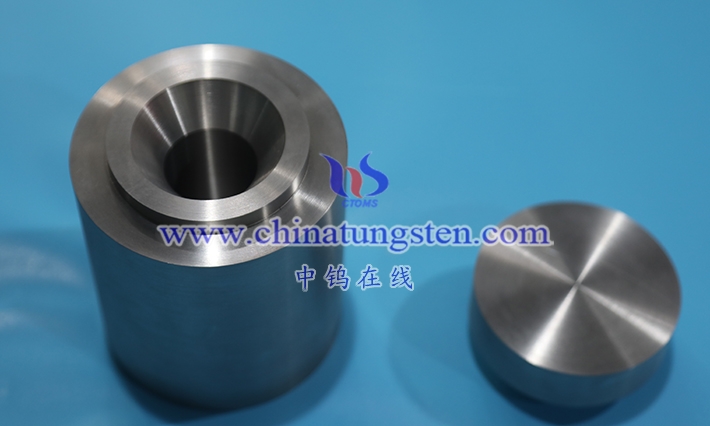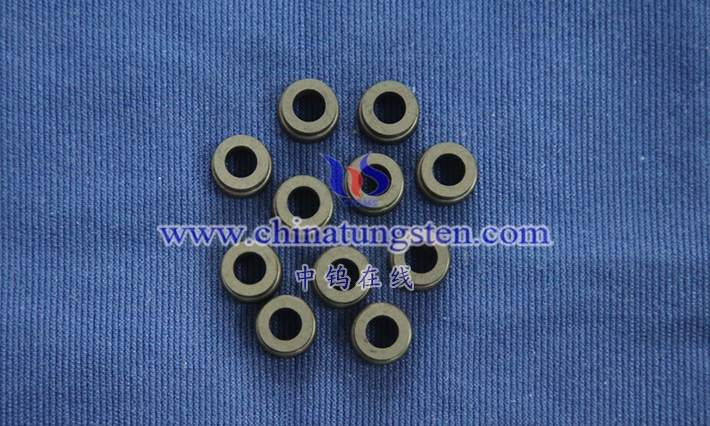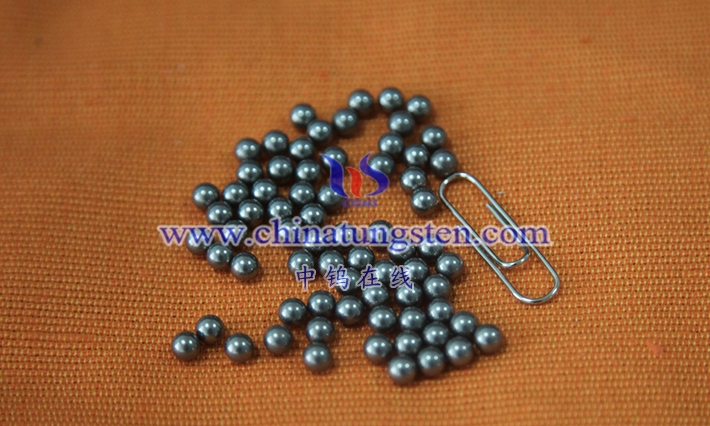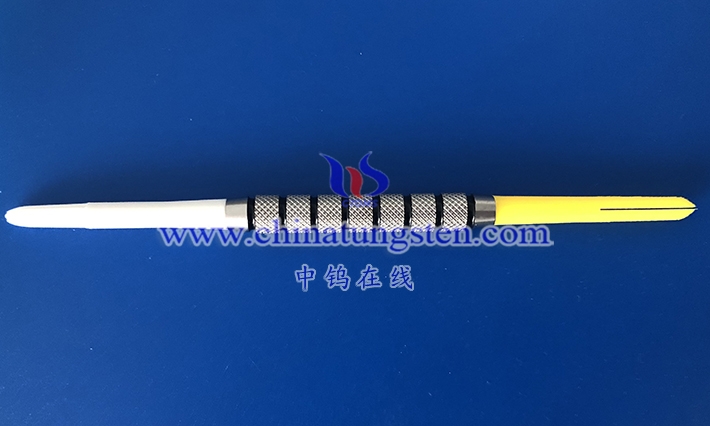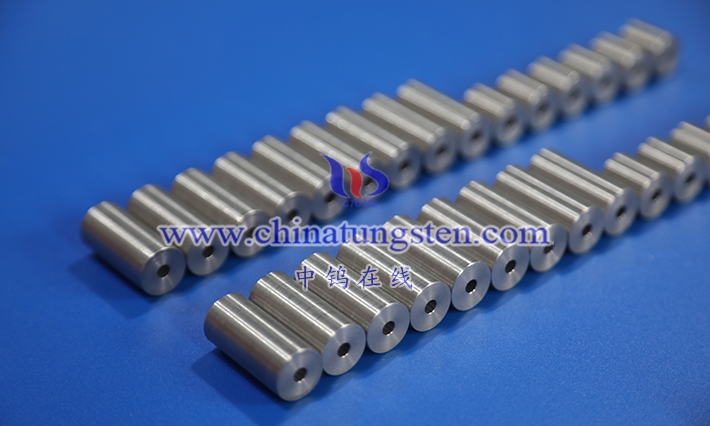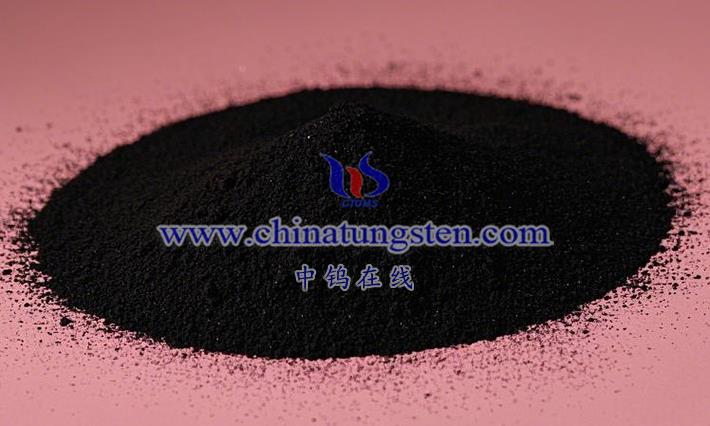
CONTENT
Chapter 1: Definition of Tungsten Disulfide
1.1 Basic Definition of Tungsten Disulfide
1.1.1 Chemical Composition and Molecular Formula
1.1.1.1 Chemical Bonding Characteristics of Tungsten and Sulfur
1.1.1.2 Molar Mass
1.1.2 Forms in Nature
1.1.2.1 Mineralogical Properties of Tungstenite
1.1.2.2 Geological Distribution
1.1.3 Origin of Name and Historical Background
1.1.3.1 Initial Discovery and Naming
1.1.3.2 Beginning of Industrial Applications
1.2 Crystal Structure of Tungsten Disulfide
1.2.1 Hexagonal Layered Structure
1.2.1.1 Sandwich Structure
1.2.1.2 Lattice Parameters
1.2.1.3 Differences Between Single-Layer and Multi-Layer Structures
1.2.2 Atomic Arrangement and Bonding Characteristics
1.2.2.1 Intralayer Covalent Bonds
1.2.2.2 Interlayer van der Waals Forces
1.2.2.3 Bond Length and Bond Angle Analysis
1.2.3 Polymorphism of Tungsten Disulfide
1.2.3.1 1T Phase
1.2.3.2 2H Phase
1.2.3.3 3R Phase
1.2.3.4 1T′ Phase
1.2.4 Nanoscale Structural Characteristics of Tungsten Disulfide
1.2.4.1 Surface Effects and Edge Activity
1.2.4.2 Quantum Confinement Effects in Single-Layer WS₂
1.2.4.3 Anisotropy and Interlayer Exfoliation Properties
Chapter 2: Properties of Tungsten Disulfide
2.1 Physical Properties of Tungsten Disulfide
2.1.1 Appearance and Color
2.1.1.1 Gray Metallic Luster in Powder Form
2.1.1.2 Transparency Variations in Thin Film Form
2.1.2 Density and Specific Gravity
2.1.2.1 Bulk Density
2.1.2.2 Density Variations in Nanostructures
2.1.3 Thermal Stability
2.1.3.1 Melting Point
2.1.3.2 Decomposition Temperature
2.1.3.3 Thermal Expansion Coefficient
2.1.4 Friction Coefficient and Lubrication Performance
2.1.4.1 Low Friction Coefficient
2.1.4.2 Friction Stability Under Temperature and Pressure
2.1.4.3 Effect of Sliding Speed on Friction
2.1.5 Hardness and Mechanical Strength
2.1.5.1 Mohs Hardness
2.1.5.2 Compressive Strength
2.1.5.3 Shear Strength and Wear Resistance
2.2 Chemical Properties of Tungsten Disulfide
2.2.1 Solubility
2.2.1.1 Insoluble in Water, Alcohol, and Dilute Acids
2.2.1.2 Soluble in Aqua Regia and Molten Alkali
2.2.1.3 Solubility Test Condition Analysis
2.2.2 Oxidation-Reduction Behavior
2.2.2.1 Reaction Mechanism of High-Temperature Oxidation to WO₃
2.2.2.2 Stability Under Reducing Conditions
2.2.2.3 Oxidation Onset Temperature and Environmental Impact
2.2.3 Corrosion Resistance and Chemical Inertness
2.2.3.1 Performance in Acidic Environments
2.2.3.2 Stability in Alkaline Environments
2.2.3.3 Applications in Chemical Corrosion Resistance
2.2.4 Chemical Reactions at High Temperatures
2.2.4.1 Reaction Kinetics with Oxygen
2.2.4.2 Interactions with Sulfides
2.2.4.3 Analysis of High-Temperature Decomposition Products
2.3 Electrical and Optical Properties of Tungsten Disulfide
2.3.1 Conductivity and Semiconductor Properties
2.3.1.1 Indirect Bandgap of Bulk Material
2.3.1.2 Direct Bandgap of Single Layer
2.3.1.3 Carrier Mobility and Doping Effects
2.3.2 Bandgap Characteristics
2.3.2.1 Transition Between Single-Layer and Multi-Layer Bandgaps
2.3.2.2 Temperature Effects on Bandgap
2.3.2.3 Application Potential of Bandgap Engineering
2.3.3 Optical Absorption and Reflection Properties
2.3.3.1 Absorption Rates in Visible and Infrared Light
2.3.3.2 Reflectivity and Refractive Index
2.3.3.3 Photoluminescence Properties
Chapter 3: Classification of Tungsten Disulfide
3.1 Classification by Morphology
3.1.1 Powdered Tungsten Disulfide
3.1.1.1 Micron-Sized Powder
3.1.1.2 Ultrafine Powder
3.1.2 Tungsten Disulfide Nanosheets
3.1.2.1 Single-Layer Nanosheets
3.1.2.2 Multi-Layer Nanosheets
3.1.3 Tungsten Disulfide Coatings
3.1.3.1 Dry Film Lubricating Coatings
3.1.3.2 Composite Coatings
3.1.4 Bulk Tungsten Disulfide
3.1.4.1 Natural Tungstenite
3.1.4.2 Synthetic Crystals
3.1.5 Tungsten Disulfide Nanowires
3.1.5.1 One-Dimensional Structural Characteristics
3.1.5.2 Synthesis Methods
3.1.6 Tungsten Disulfide Quantum Dots
3.1.6.1 Zero-Dimensional Structural Characteristics
3.1.6.2 Optical and Electrical Advantages
3.2 Classification by Crystal Structure
3.2.1 1T Phase
3.2.1.1 Structural Characteristics
3.2.1.2 Stability and Transition Conditions
3.2.2 2H Phase
3.2.2.1 Structural Characteristics
3.2.2.2 Proportion in Industrial Applications
3.2.3 3R Phase
3.2.3.1 Structural Characteristics
3.2.3.2 Rarity and Research Value
3.2.4 1T′ Phase
3.2.4.1 Distorted Structural Characteristics
3.2.4.2 Topological Properties
3.3 Classification by Purity and Application
3.3.1 Industrial-Grade Tungsten Disulfide
3.3.1.1 Purity Range
3.3.1.2 General Applications
3.3.2 High-Purity Tungsten Disulfide
3.3.1.1 Purity
3.3.1.2 Uses in Electronics and Catalysis
3.3.3 Tungsten Disulfide for Composite Materials
3.3.3.1 Lubricating Composites
3.3.3.2 Reinforcement Materials
3.3.4 Laboratory Research-Grade Tungsten Disulfide
3.3.4.1 High-Purity Nanoscale
3.3.4.2 Customized Requirements
3.4 Classification by Particle Size
3.4.1 Micron-Sized Tungsten Disulfide
3.4.1.1 Size Range
3.4.1.2 Application Scenarios
3.4.2 Nanoscale Tungsten Disulfide
3.4.2.1 Size Range
3.4.2.2 Advantages of Nano Effects
3.4.3 Ultrafine Tungsten Disulfide
3.4.3.1 Size
3.4.3.2 Specialized Applications
3.4.4 Submicron Tungsten Disulfide
3.4.4.1 Size Range
3.4.4.2 Transitional Characteristics
3.4.5 Sub-Nanoscale Tungsten Disulfide
3.4.5.1 Size Range
3.4.5.2 Quantum Effects
Chapter 4: Production Processes of Tungsten Disulfide
4.1 Traditional Production Methods
4.1.1 Calcination Decomposition Method
4.1.1.1 Raw Material Selection
4.1.1.2 Sulfidation Reaction
4.1.1.3 High-Temperature Calcination
4.1.1.4 Byproduct Treatment
4.1.1.5 Advantages
4.1.1.6 Disadvantages
4.1.1.7 Application Scenarios
4.1.2 Tungsten Trisulfide Sublimation Method
4.1.2.1 Preparation of WS₃
4.1.2.2 Sublimation Conditions
4.1.2.3 Excess Sulfur Removal
4.1.2.4 Advantages
4.1.2.5 Disadvantages
4.1.2.6 Application Scenarios
4.2 Modern Synthesis Methods
4.2.1 Chemical Vapor Deposition Method
4.2.1.1 Precursor Selection
4.2.1.2 Deposition Conditions
4.2.1.3 Film Thickness Control
4.2.1.4 Advantages
4.2.1.5 Disadvantages
4.2.1.6 Application Scenarios
4.2.2 Hydrothermal/Solvothermal Method
4.2.2.1 Raw Materials
4.2.2.2 Reaction Conditions
4.2.2.3 Morphology Control
4.2.2.4 Advantages
4.2.2.5 Disadvantages
4.2.2.6 Application Scenarios
4.2.3 Mechanical Exfoliation Method
4.2.3.1 Exfoliation Raw Materials
4.2.3.2 Process
4.2.3.3 Yield and Purity
4.2.3.4 Advantages
4.2.3.5 Disadvantages
4.2.3.6 Application Scenarios
4.3 Optimization of Tungsten Disulfide Production Technology
4.3.1 Purity Enhancement Techniques
4.3.1.1 Impurity Removal
4.3.1.2 Post-Treatment Processes
4.3.2 Particle Size Control
4.3.2.1 Grinding and Sieving
4.3.2.2 Nanonization Techniques
4.3.3 Environmental Measures
4.3.3.1 Sulfide Emission Control
4.3.3.2 Wastewater Treatment
4.4 Production Cost and Efficiency
4.4.1 Raw Material Cost Analysis
4.4.1.1 Tungsten Source Pricing
4.4.1.2 Sulfur Source Costs
4.4.2 Energy Consumption and Equipment Requirements
4.4.2.1 High-Temperature Equipment
4.4.2.2 Energy Consumption Optimization
4.4.3 Economics of Large-Scale Production
4.4.3.1 Benefits of Batch Production
4.4.3.2 Cost Reduction Strategies
Chapter 5: Applications of Tungsten Disulfide
5.1 Applications in Lubrication
5.1.1 Solid Lubricants
5.1.1.1 High-Temperature Environments
5.1.1.1.1 Industrial High-Temperature Equipment
5.1.1.1.2 Engine Components
5.1.1.2 Vacuum Environments
5.1.1.2.1 Spacecraft Sliding Components
5.1.1.2.2 Vacuum Pumps
5.1.1.3 High-Pressure Conditions
5.1.1.3.1 Heavy Machinery
5.1.1.3.2 Hydraulic Systems
5.1.2 Coating Applications
5.1.2.1 Mechanical Components
5.1.2.1.1 Bearings
5.1.2.1.2 Gears
5.1.2.2 Tools and Dies
5.1.2.2.1 Stamping Dies
5.1.2.2.2 Cutting Tools
5.1.2.3 Spraying Processes
5.1.2.3.1 Dry Film Spraying
5.1.2.3.2 Plasma Spraying
5.1.3 Composite Lubricating Materials
5.1.3.1 Grease-Mixed Lubricants
5.1.3.1.1 Automotive Grease
5.1.3.1.2 Industrial Grease
5.1.3.2 Self-Lubricating Polymers
5.1.3.2.1 Engineering Plastics
5.1.3.2.2 Seals
5.2 Applications in Catalysis
5.2.1 Petrochemical Catalysts
5.2.1.1 Hydrodesulfurization
5.2.1.1.1 Diesel Desulfurization
5.2.1.1.2 Gasoline Purification
5.2.1.2 Hydrodenitrogenation
5.2.1.2.1 Fuel Oil Processing
5.2.1.2.2 Heavy Oil Cracking
5.2.1.3 Reforming Reactions
5.2.1.3.1 Aromatic Production
5.2.1.3.2 Octane Rating Enhancement
5.2.2 Photocatalysis and Electrocatalysis
5.2.2.1 Organic Pollutant Degradation
5.2.2.1.1 Wastewater Treatment
5.2.2.1.2 Air Purification
5.2.2.2 Hydrogen Evolution Reaction
5.2.2.2.1 Water Electrolysis for Hydrogen
5.2.2.2.2 Hydrogen Fuel Production
5.2.2.3 Oxygen Evolution Reaction
5.2.2.3.1 Water Electrolysis for Oxygen
5.2.2.3.2 Water Oxidation Catalysis
5.2.3 Unsupported Catalyst Characteristics
5.2.3.1 High Active Surface
5.2.3.1.1 Nanoscale Active Sites
5.2.3.1.2 Enhanced Catalytic Efficiency
5.2.3.2 Long-Lifespan Design
5.2.3.2.1 High-Temperature Stability
5.2.3.2.2 Poisoning Resistance
5.3 Applications in Electronics
5.3.1 Semiconductor Devices
5.3.1.1 Field-Effect Transistors
5.3.1.1.1 High-Performance Chips
5.3.1.1.2 Low-Power Devices
5.3.1.2 Photodetectors
5.3.1.2.1 Infrared Sensors
5.3.1.2.2 Visible Light Detection
5.3.1.3 Flexible Electronics
5.3.1.3.1 Wearable Devices
5.3.1.3.2 Flexible Displays
5.4 Applications in Energy
5.4.1 Energy Storage Materials
5.4.1.1 Lithium-Ion Battery Anodes
5.4.1.1.1 High-Capacity Batteries
5.4.1.1.2 Fast-Charging Technology
5.4.1.2 Sodium-Ion Batteries
5.4.1.2.1 Low-Cost Energy Storage
5.4.1.2.2 Large-Scale Applications
5.4.1.3 Supercapacitors
5.4.1.3.1 High Power Density
5.4.1.3.2 Rapid Charge-Discharge
5.4.2 Energy Conversion
5.4.2.1 Solar Cell Sensitizers
5.4.2.1.1 Dye-Sensitized Solar Cells
5.4.2.1.2 Enhanced Photoelectric Conversion Efficiency
5.4.2.2 Fuel Cell Electrodes
5.4.2.2.1 Hydrogen Fuel Cells
5.4.2.2.2 Oxygen Reduction Reaction
5.4.2.3 Thermoelectric Materials
5.4.2.3.1 Waste Heat Power Generation
5.4.2.3.2 Thermoelectric Power Generation
5.5 Applications in Other Fields
5.5.1 Aerospace
5.5.1.1 NASA-Certified Lubricants
5.5.1.1.1 Critical Spacecraft Components
5.5.1.1.2 Space Station Equipment
5.5.1.2 Military Wear-Resistant Components
5.5.1.2.1 Weaponry
5.5.1.2.2 Armored Vehicles
5.5.1.3 Satellite Mechanisms
5.5.1.3.1 Solar Panel Drives
5.5.1.3.2 Antenna Positioning
5.5.2 Nanotechnology
5.5.2.1 Chemical Sensors
5.5.2.1.1 Gas Detection
5.5.2.1.2 Environmental Monitoring
5.5.2.2 Bioimaging Probes
5.5.2.2.1 Fluorescent Labeling
5.5.2.2.2 Cellular Imaging
5.5.2.3 Drug Delivery Carriers
5.5.2.3.1 Targeted Drug Delivery
5.5.2.3.2 Nanomedicine Design
5.5.3 Superconductivity and Topological Materials Research
5.5.3.1 Superconducting Transition Temperature
5.5.3.1.1 Low-Temperature Superconductivity Testing
5.5.3.1.2 High-Temperature Superconductivity Potential
5.5.3.2 Topological Insulator Potential
5.5.3.2.1 Quantum Computing
5.5.3.2.2 Spintronics
Chapter 6: Application Prospects of Tungsten Disulfide
6.1 Global Market Demand Overview
6.1.1 Lubrication Market Share
6.1.1.1Industrial Lubrication Demand
6.1.1.2 Automotive Industry Growth
6.1.2 Electronics Sector Growth
6.1.2.1 Semiconductor Market
6.1.2.2 Emerging Electronic Products
6.2 Outlook for Emerging Application Fields
6.2.1 Green Energy
6.2.1.1 Renewable Energy Equipment
6.2.1.2 Carbon Neutrality Goals
6.2.2 Smart Materials
6.2.2.1 Adaptive Materials
6.2.2.2 Smart Manufacturing
Chapter 7: Environmental Impact of Tungsten Disulfide Production and Application
7.1 Environmental Impact of Production Processes
7.1.1 Waste Gas Emissions
7.1.2 Wastewater Pollution
7.1.3 Solid Waste
7.1.4 Energy Consumption and Carbon Footprint
7.1.5 Potential Ecological and Health Risks
7.2 Environmental Impact of Application Processes
7.2.1 Waste Emissions
7.2.2 Particulate Dispersion
7.2.3 Lifecycle Management
7.2.4 Potential Ecological and Health Risks
7.2.5 Application Scenario Variation Analysis
7.3 Environmental Measures and Strategies
7.3.1 Waste Gas Treatment
7.3.2 Wastewater Treatment
7.3.3 Solid Waste Recovery
7.3.4 Particulate Control
7.3.5 Green Process Optimization
7.3.6 Policy and Regulatory Support
Chapter 8: Suppliers of Tungsten Disulfide
8.1 China Tungsten Intelligent Manufacturing Co., Ltd.
READ MORE: What Is Tungsten Oxide
====================================================================
Customized R&D and Production of Tungsten, Molybdenum Products
Chinatungsten Online and CTIA GROUP LTD have been working in the tungsten industry for nearly 30 years, specializing in flexible customization of tungsten and molybdenum products worldwide, which are tungsten and molybdenum design, R&D, production, and overall solution integrators with high visibility and credibility worldwide.
Chinatungsten Online and CTIA GROUP LTD provide products mainly including: tungsten oxide products, such as tungstates such as APT/WO3; tungsten powder and tungsten carbide powder; tungsten metal products such as tungsten wire, tungsten ball, tungsten bar, tungsten electrode, etc.; high-density alloy products, such as dart rods, fishing sinkers, automotive tungsten crankshaft counterweights, mobile phones, clocks and watches, tungsten alloy shielding materials for radioactive medical equipment, etc.; tungsten silver and tungsten copper products for electronic appliances. Cemented carbide products include cutting tools such as cutting, grinding, milling, drilling, planing, wear-resistant parts, nozzles, spheres, anti-skid spikes, molds, structural parts, seals, bearings, high-pressure and high-temperature resistant cavities, top hammers, and other standard and customized high-hardness, high-strength, strong acid and alkali resistant high-performance products. Molybdenum products include molybdenum oxide, molybdenum powder, molybdenum and alloy sintering materials, molybdenum crucibles, molybdenum boats, TZM, TZC, molybdenum wires, molybdenum heating belts, molybdenum spouts, molybdenum copper, molybdenum tungsten alloys, molybdenum sputtering targets, sapphire single crystal furnace components, etc.
For more information about tungsten disulfide please visit the website: tungsten-disulfide.com
If you are interested in related products, please contact us:
Email: sales@chinatungsten.com|
Tel: +86 592 5129696 / 86 592 5129595
